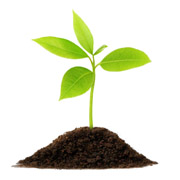Agronomy and Horticulture Department
Gene Cloning Part 1: The Mechanics of Recombinant DNA
Date of this Version
2003
Document Type
Article
Citation
Plant and Soil Sciences eLibrary (PASSeL) Lesson
Abstract
Objectives for Gene Cloning Part 1
This lesson describes how DNA molecules can be recombined to make recombinant DNA and how special DNA molecules called plasmids allow scientists to clone genes.
Objectives: At the completion of this lesson you should be able to:
- Define gene cloning, gene library, plasmid, recombinant plasmid, and vector.
- Outline and describe the steps of the process used to make genomic and cDNA libraries.
- Explain the role of antibiotic resistance and selectable marker genes in the gene cloning process.
- Contrast libraries that use plasmids as vectors to BAC or YAC libraries.
Modules:
- Lesson home
- Objectives for Gene Cloning Part 1
- The Gene Cloning Process
- Why clone genes?
- DNA is cloned from DNA
- Genes are Connected to Other Genes
- Gene Cloning Requires Knowledge of the Gene’s Unique Characteristics.
- Plasmids do the “Tricking”
- Cloning with LacZ and X-gal plasmids
- Step One: Make Sticky Ends
- Step Two: Make Recombinant Plasmids
- Step Three: Transformation of E. coli
- Step Four: Selecting Bacteria with Recombinant Plasmids
- Step Five: Making Libraries of Genes
- Genomic Libraries
- cDNA library
- Gene Libraries with Big Pieces
- Videos
COinS


Comments
Copyright © 2003 Don Lee and Patricia Hain. Used by permission.
This project was supported in part by the National Research Initiative Competitive Grants CAP project 2011-68002-30029 from the USDA National Institute of Food and Agriculture, administered by the University of California-Davis and by the National Science Foundation (NSF), Division of Undergraduate Education, National SMETE Digital Library Program, Award #0938034, administered by the University of Nebraska. Any opinions, findings, conclusions, or recommendations expressed in this publication are those of the authors and do not necessarily reflect the views of the USDA or NSF.
Development of this lesson was supported in part by Cooperative State Research, Education, & Extension Service, U.S. Dept of Agriculture under Agreement Number 98-EATP-1-0403 administered by Cornell University and the American Distance Education Consortium (ADEC). Any opinions, findings, conclusions or recommendations expressed in this publication are those of the author(s) and do not necessarily reflect the view of the U.S. Department of Agriculture.